Did you know that 70% of the clicks on Google search results go to the first 5 organic listings? What if you control how Search engines view and crawl your website?
That’s the power of On-Page SEO. On-page SEO is all up to you. It depends on your targeted audience as well as your targeted research.
If you are confused about how to get started, I have created a step-by-step guide on on-page SEO.
Before moving to the topic, we first need to understand the basics.
What Is on page SEO?
On-page SEO is also known as On-site SEO. It is the activity of optimizing content on your web page. It is what you cover on the page of your site. On-page SEO helps us to rank in search engines on relevant results.
On-page SEO is a part of SEO and SEO is divided into 3 factors:
On page SEO
Off-page SEO
Technical SEO
Factors For On-page SEO
On-page SEO is an important factor to consider if you want to make a big impact in ranking from small changes. Here is a list of factors to consider:
- Write unique, valuable content
- Place target keywords strategically
- Craft compelling, keyword-rich title tags
- Write engaging meta-descriptions
- Use clear headings and subheadings
- Optimize URLs for SEO
- Add internal links for easy navigation
- Include relevant external links
- Optimize images with alt text and descriptive filenames
- Fill content gaps to cover missing information
- Demonstrate expertise and authority schema markup for rich results
- Ensure fast loading and mobile-friendly design
- Add interactive elements to increase engagement.
- Optimize content for voice search queries.
- Leverage dynamic content for personalization.
Let’s move on to discuss these factors in depth for better understanding.

1- Write Unique And Valuable Content
Creating unique and valuable content is the foundation of successful SEO. Aim to provide fresh insights that address your audience’s needs. Avoid duplicate content and focus on offering information that stands out from competitors. Your content should solve problems, answer questions, or deliver entertainment—something that adds real value.
Tip: This key point is that updating your content can help you work like an expert in Google and user sight.

2- Place Target Keywords Strategically
Once you’ve identified your target keywords, place them naturally within the content. Include them in the first paragraph, headings, and subheadings, but don’t overstuff. Ensure the flow feels natural and not forced. Proper keyword placement helps search engines understand your content while enhancing user experience.
Tip: If you want to rank multiple keywords from a single blog, use LSI (latent semantic Indexing).
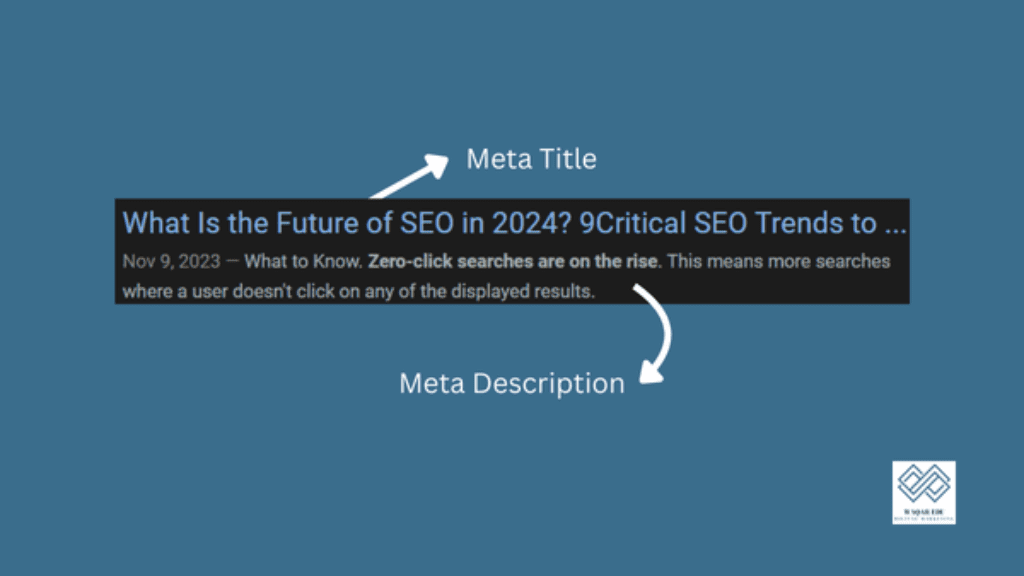
3- Craft Keyword-Rich Title Tags
Title tags are critical for both users and search engines. Create a title that is attention-grabbing and includes your main keyword. Keep your meta title under 60 characters to ensure that it displays properly in search results. A well-crafted title tag can boost your click-through rate and improve your rankings.
Tip: The title tag is an important factor to attract the reader or visitor’s attention. Your title tag should be relevant and keyword-rich.
4- Write Engaging Meta-Descriptions
Meta descriptions act as a mini advertisement for your content. Write engaging, concise descriptions (about 155-160 characters) that summarize the page and entice users to click. Incorporate your target keyword to help with SEO, but focus on making the description appealing to human readers.
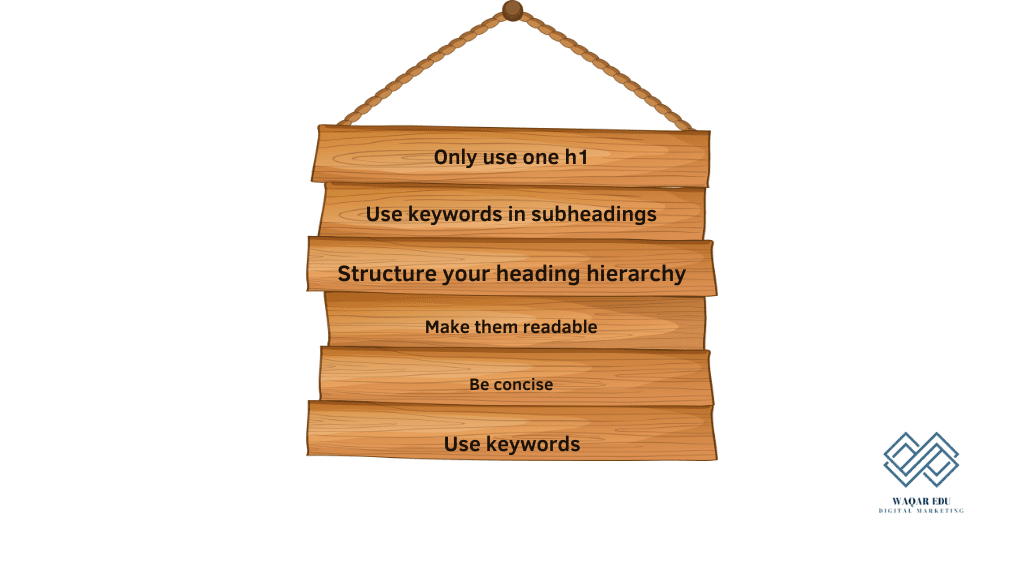
5- Use Clear Headings
Use concise, creative headings and subheadings to arrange your information. For the main title, use H1, and for the subheadings, use H2. These not only help with readability but also assist search engines in understanding the structure of your content. Headings should be concise and include relevant keywords.
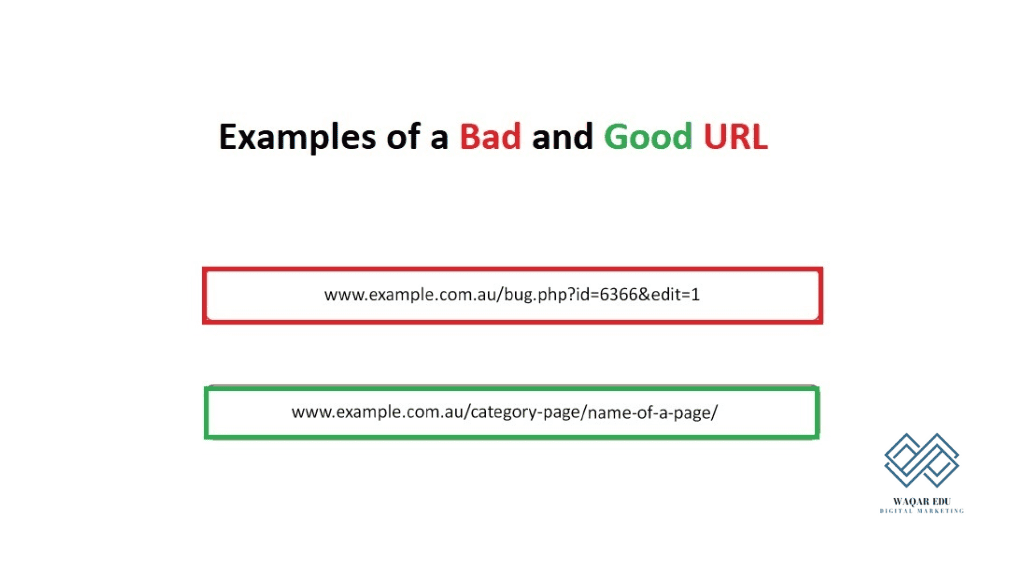
6- Optimize URLs For SEO
Ensure your URLs are simple, clean, and keyword-rich. A short and descriptive URL gives users and search engines an idea of the content’s focus. Avoid unnecessary numbers or symbols. For example, use example.com/seo-best-practices instead of example.com/12345-seo-practices.
Tip: Use hyphens (-) to separate words in your URLs for better readability because search engines interpret them more easily than underscores (_).
4- Add Internal Links
Internal links are key to guiding users through your website and improving SEO. Link to relevant pages within your content, helping visitors find more information. Internal linking also allows search engines to crawl your site more effectively, boosting rankings for linked pages.
Tip: Your internal link should be relevant to the blog page, but shouldn’t be your primary keyword. linking on the same keywords again and again can be harmful for your site.
5- Include Relevant External Links
Linking to credible external sources enhances your content’s authority. Ensure the links are from trusted sites, as this boosts your credibility in the eyes of both users and search engines. Always open external links in a new tab to keep users on your site.
Tip: Use relevant external links in your content to make it a rich blog.
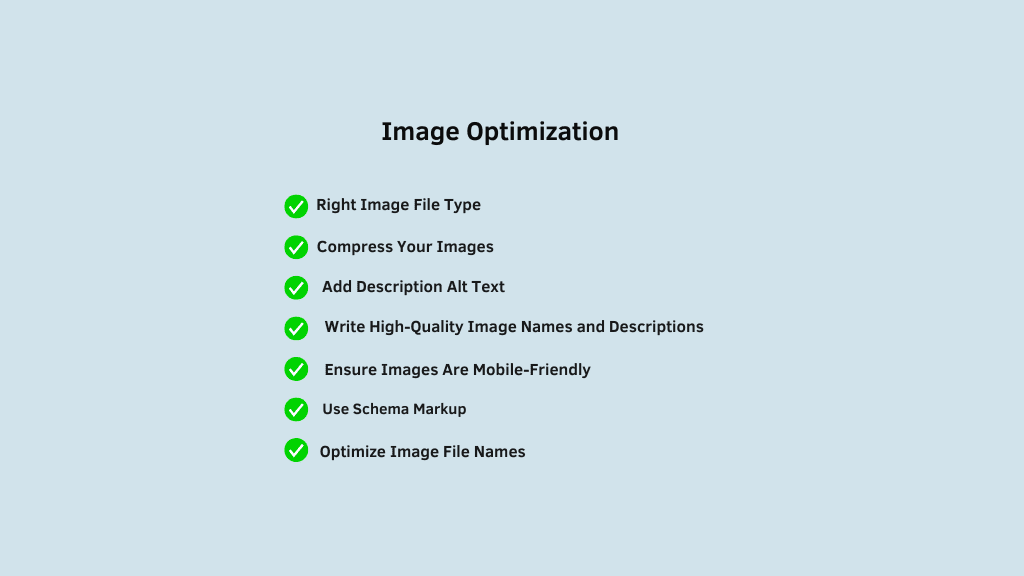
6- Optimize Images
Images should be optimized for SEO by using alt text and descriptive filenames. Alt text helps search engines understand what the image is about and makes your content more accessible. Use your keywords naturally in the alt text and avoid generic filenames like “IMG_1234.” Instead, use descriptive names like “seo-guide-image.jpg.”
Tip: Always compress images to reduce file size for faster loading times without sacrificing quality.

7- Fill Content Gaps
Identify areas where your competitors are lacking and fill those content gaps. This might include answering common questions, offering more detailed insights, or providing fresh perspectives. Comprehensive content that fully covers a topic is more likely to rank higher and satisfy user intent.
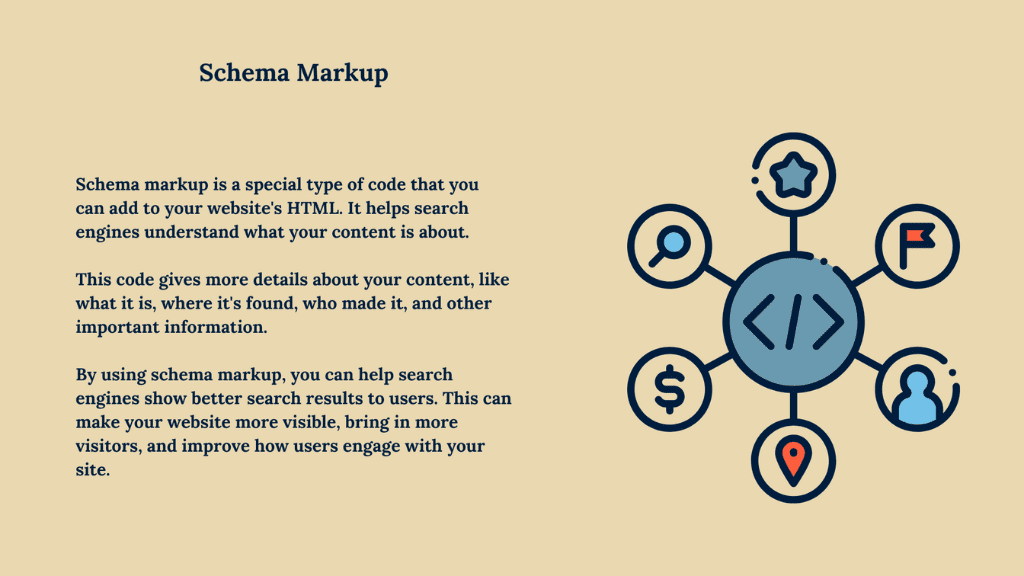
8- Expertise And Authority Schema Markup
Schema markup can help search engines better understand your content, potentially leading to rich results like featured snippets or reviews in search results. By showcasing your expertise and authority, you not only boost your SEO but also build trust with users. Implement relevant schema markup for articles, reviews, or FAQs.
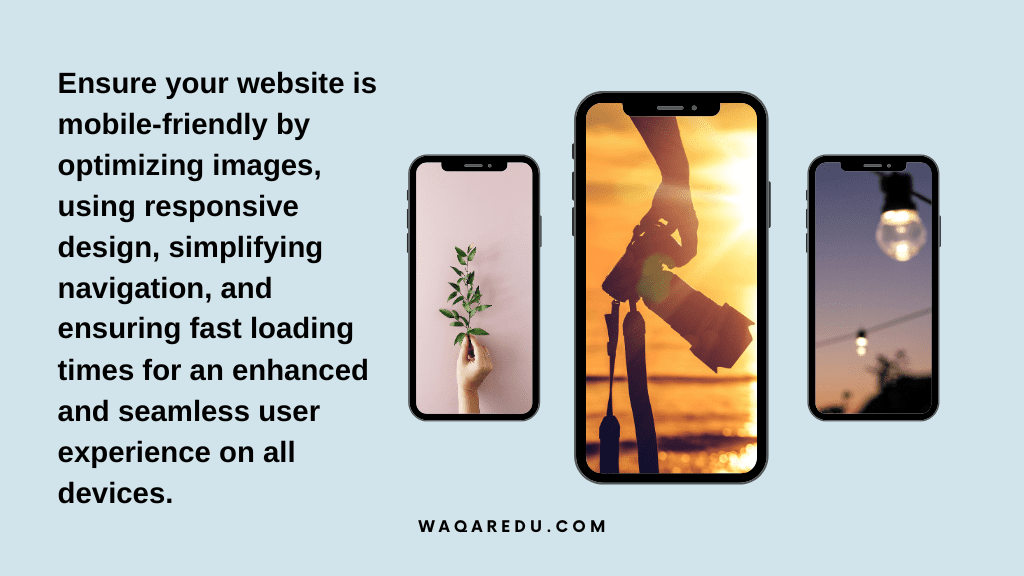
9- Fast Loading And Mobile-Friendly Design
A fast-loading, mobile-friendly website is essential for both user experience and SEO. Google prioritizes sites that load quickly and work well on mobile devices. Use tools like Google PageSpeed Insights to check your site’s performance and make necessary improvements. A responsive, well-optimized site keeps users engaged and reduces bounce rates.
Tip: Implement lazyload on images and videos for better SEO.
Advance On-page SEO In 2025
You need to update you with these factors to rank in 2025.
1. E-E-A-T
What it is: E-E-A-T is a concept from Google’s Search Quality Evaluator Guidelines that stresses the importance of establishing credibility. This is particularly relevant for YMYL (Your Money Your Life) pages that involve health, finance, or safety.
How to implement:
- Author Profiles: Include detailed author bios with qualifications and experience relevant to the topic.
- Citations and References: Link to reputable sources to support claims made in your content.
- User Reviews and Testimonials: Encourage and prominently display user testimonials, reviews, and ratings.
2. User Intent Optimization
What it is: Understanding the intent behind a user’s search query is crucial to providing them with relevant answers.
How to implement:
- Keyword Analysis: Use tools to analyze keywords based on user intent; categorize them into informational, transactional, navigational, etc.
- Content Structuring: Ensure your content satisfies the identified intent, such as using guides for informational queries or product listings for transactional queries.
3. Content Structure and Clarity
What it is: A well-structured content enhances readability and keeps users engaged.
How to implement:
- Use Formatting: Incorporate bullet points, numbered lists, and short paragraphs.
- Visual Breaks: Use images, videos, and graphs to create breaks in text, helping to maintain reader interest.
4. Voice Search Optimization
What it is: With the rise of smart speakers and voice assistants, optimizing for voice search is becoming essential.
How to implement:
- Natural Language: Create content that answers questions in a conversational tone.
- Question Formats: Use question headings and FAQs to target common voice search queries.
5. Video Content Integration
What it is: Video content can enhance user engagement and can rank well in search results.
How to implement:
- Optimize Titles and Descriptions: Use relevant keywords in the video title and description.
- Transcripts and Captions: Provide transcripts of videos to help search engines index the content accurately.
6. Featured Snippet Targeting
What it is: Featured snippets are direct answers displayed above organic results, helping your content get more visibility.
How to implement:
- Format for Snippets: Use clear, concise answers in a format ideal for snippets (like lists or paragraphs).
- Schema Markup: Implement structured data to help search engines better understand your content.
7. Core Web Vitals Optimization
What it is: Core Web Vitals are metrics that evaluate the user experience of a page, specifically focusing on loading speed, interactivity, and visual stability.
How to implement:
- Optimize Loading Speed: Compress images, use a Content Delivery Network (CDN), and minimize JavaScript.
- Ensure Interactivity: Optimize server response times and minimize client-side rendering.
- Visual Stability: Ensure that layout shifts do not occur while the page is loading by using size attributes for images and videos.
8. Schema Markup Beyond Expertise
What it is: Schema markup is a code that you put on your website to help search engines return more informative results.
How to implement:
- Implement Rich Snippets: Use schema markup for reviews, FAQs, How-To guides, and other relevant formats.
- Local Business Schema: For local businesses, implement local business schema to enhance local search visibility.
9. Social Sharing Integration
What it is: Facilitating social sharing can help amplify your content’s reach and engagement.
How to implement:
- Social Share Buttons: Place share buttons prominently to encourage sharing across social platforms.
- Encouraging Engagement: Create engaging content that is likely to be shared, such as infographics or articles with unique insights.
10. Local SEO Enhancements
What it is: For businesses that operate regionally, optimizing for local SEO is essential for attracting nearby customers.
How to implement:
- Google My Business: Ensure your GMB profile is fully optimized and regularly updated.
- Local Listings: Build citations in local directories, ensuring NAP consistency across all platforms.
11. Content Personalization
What it is: Tailoring content based on user behaviour enhances user experience and engagement.
How to implement:
- Behaviour Tracking: Utilize analytics tools to understand user behaviour and preferences.
- Dynamic Content: Use personalized content sections based on user profiles or historical behaviour.
12. Accessibility Features
What it is: Accessibility ensures that all users, including those with disabilities, can navigate and interact with your website effectively.
How to implement:
- Alt Text for Images: Always provide alt text for images to support screen readers.
- Keyboard Navigation: Ensure that users can navigate your site using keyboard shortcuts.
- Colour Contrast and Fonts: Use colours and font sizes that are easy to read for individuals with visual impairments.
By focusing on these advanced factors, you can enhance your On-Page SEO strategy in 2025, ultimately driving more traffic and improving user engagement on your website.
13. AI Content Integration
What it is: Leveraging AI to create, optimize, and personalize content can revolutionize how your website engages users and ranks higher.
How to implement:
- AI-Driven Content Creation: Tools like ChatGPT or Jasper AI can assist in generating ideas, improving tone, and even writing sections of your content while maintaining relevance and readability.
- Real-Time Analytics Integration: Use AI analytics to identify trending topics or gaps in your content strategy, enabling data-driven decisions.
- Predictive Content Suggestions: Implement AI tools that recommend content updates based on user preferences and search trends.
14. Search Intent-Specific CTAs
What it is: Crafting CTAs that directly address the user’s intent—whether informational, navigational, or transactional—boosts conversions and user satisfaction.
How to implement:
- Intent-Matched CTAs: Analyze whether your users are looking to learn, buy, or navigate, and adjust CTAs like Learn More, Get Started, or Buy Now accordingly.
- Positioning: Place CTAs strategically within content where users are most likely to take action based on their intent.
- A/B Testing: Continuously test variations of CTAs to determine which resonate best with your audience.
15. Interactive Content Features
What it is: Engaging users through interactive elements like quizzes, polls, and infographics can increase dwell time and user satisfaction.
How to implement:
- Dynamic Elements: Embed quizzes or calculators that address user pain points or curiosity.
- Interactive Infographics: Replace static visuals with clickable, zoomable, or animated infographics to enhance engagement.
- Live Q&A Widgets: Add chatbots or live Q&A sections to allow users to interact directly with your content.
16. Real-Time Personalization
What it is: Offering dynamic content based on real-time user data ensures a more engaging and relevant experience.
How to implement:
- Geo-Targeted Content: Display location-specific offers or recommendations using IP-based personalization.
- Behavior-Based Updates: Show dynamic content, like suggested blogs or products, based on browsing history.
- Seasonal Personalization: Adapt content to seasons, holidays, or current events to keep it timely and engaging.
17. Zero-Click Search Optimization
What it is: Optimizing for featured snippets and other SERP elements allows your content to answer user queries directly on search pages.
How to implement:
- Structured Data: Use schema markup to help search engines understand your content better.
- Precise Answers: Provide concise, direct answers to common questions in your niche.
- Listicles and Tables: Format content in easy-to-skim formats that Google often uses for snippets.
18. Advanced Multilingual SEO
What it is: Expanding your content to reach a global audience with localized and culturally adapted SEO strategies.
How to implement:
- Hreflang Tags: Use hreflang attributes to signal language-specific versions of your site to search engines.
- Localized Keywords: Research and use keywords specific to your target regions and languages.
- Cultural Relevance: Adapt images, tone, and examples to align with the cultural preferences of different audiences.
19. Image SEO with AI Optimization
What it is: Enhancing image SEO with AI improves search visibility while ensuring accessibility and relevance.
How to implement:
- AI-Generated Alt Texts: Use AI tools to automatically create descriptive and accurate alt texts for images.
- Smart Compression: Apply AI-powered image compression to reduce file size without compromising quality.
- Contextual Relevance: Optimize images to match surrounding content and include keywords in filenames and captions.
20. Proactive Mobile UX
What it is: Going beyond basic mobile responsiveness to provide an optimized, seamless experience for mobile users.
How to implement:
- Touch-Friendly Design: Ensure buttons, links, and menus are easy to use on small screens.
- 5G Optimization: Optimize for faster connections by enabling instant-loading assets and videos.
- Mobile-Specific Features: Use AMP (Accelerated Mobile Pages) and mobile-focused layouts to reduce bounce rates and improve rankings.
Final Thoughts
On-page SEO expertise will be more important than ever in 2025 to boost online exposure and generate organic traffic. By implementing these strategies, you can position your website to flourish in a competitive digital landscape while monitoring performance and adapting to trends for better rankings and conversions.
FAQs
Key techniques include:
Optimizing for user intent and relevant keywords.
Enhancing page speed and mobile usability.
Structuring content with proper headings and internal links.
Adding meta tags, alt text, and structured data (schema).
Start with keyword research, then:
Create high-quality, optimized content.
Add meta titles, descriptions, and headings.
Ensure your website is fast and mobile-friendly.
Implement internal links and schema markup.
Submit your site to Google Search Console for indexing.
In 2025, on-page SEO will place a stronger emphasis on user experience, AI-driven content relevance, mobile optimization, and page speed. Google’s algorithms will prioritize websites that deliver high-quality content and fast, seamless interactions.

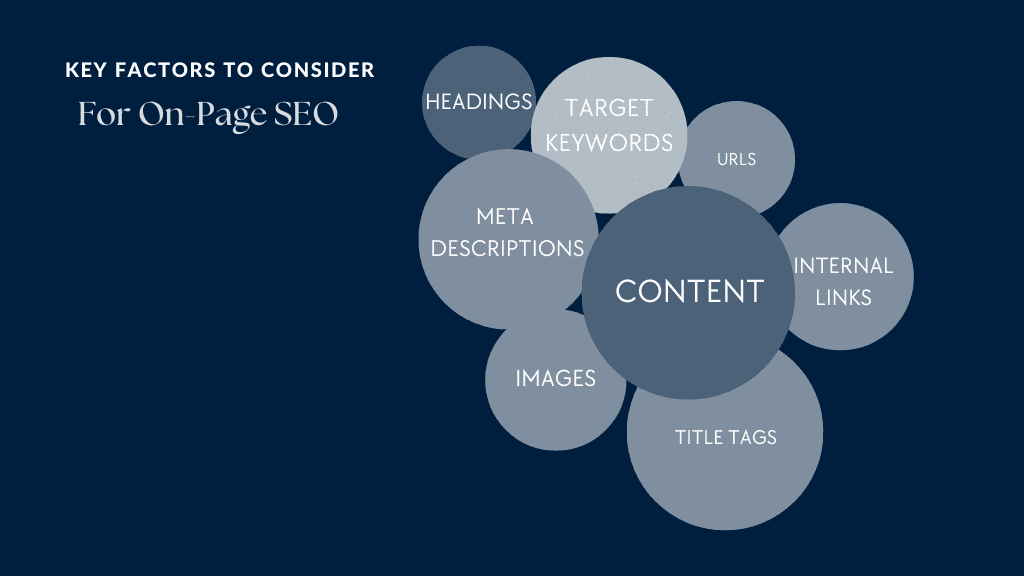
Leave a Reply